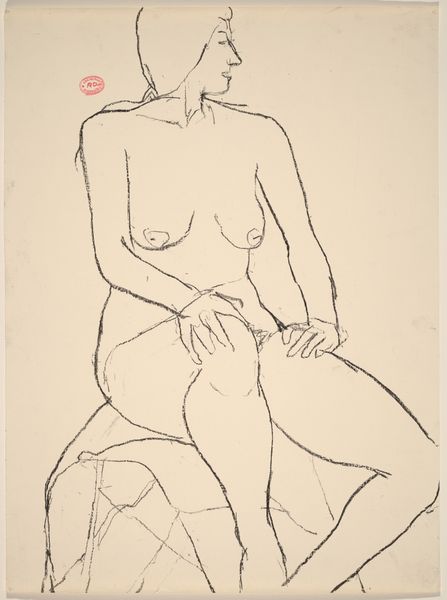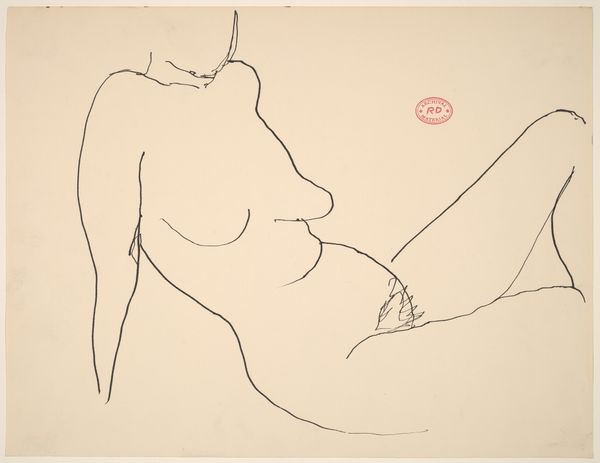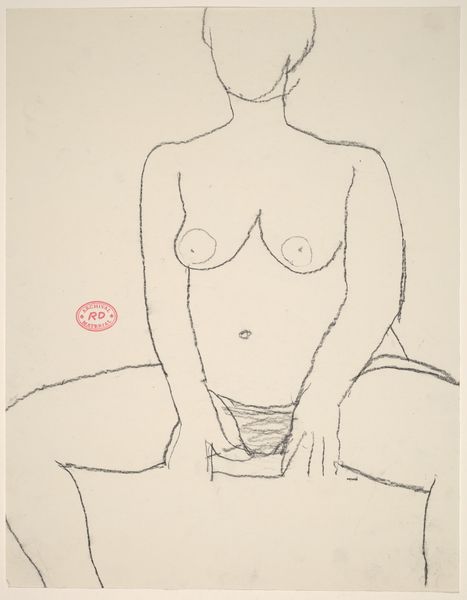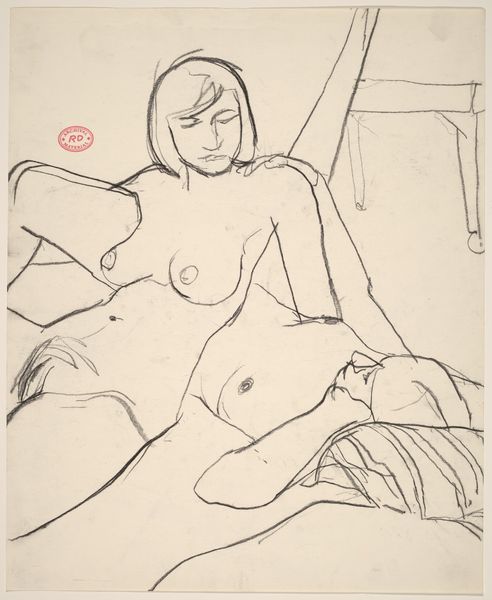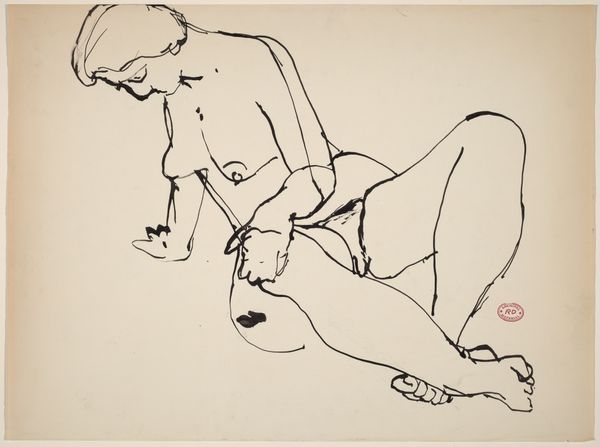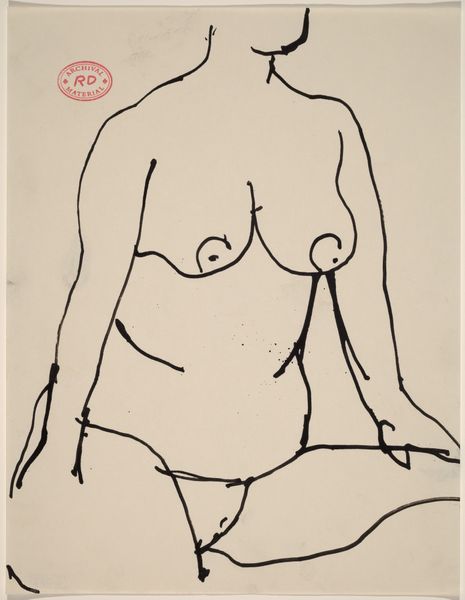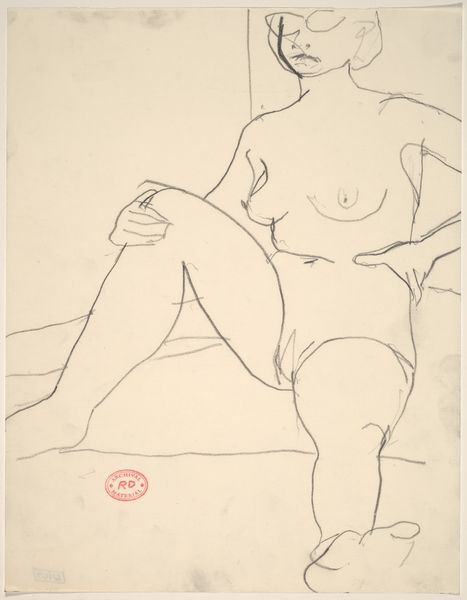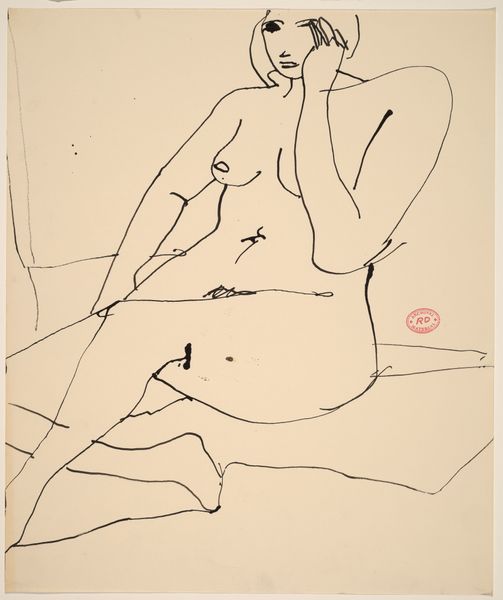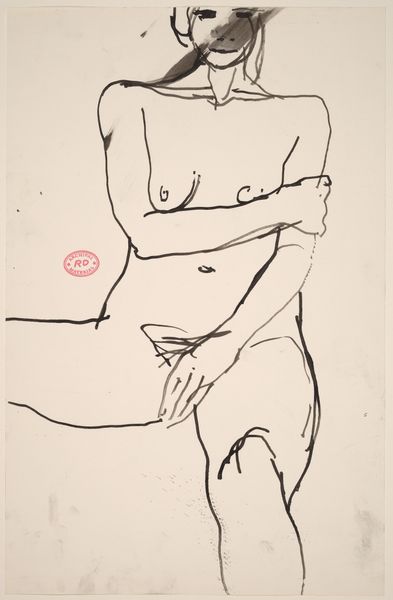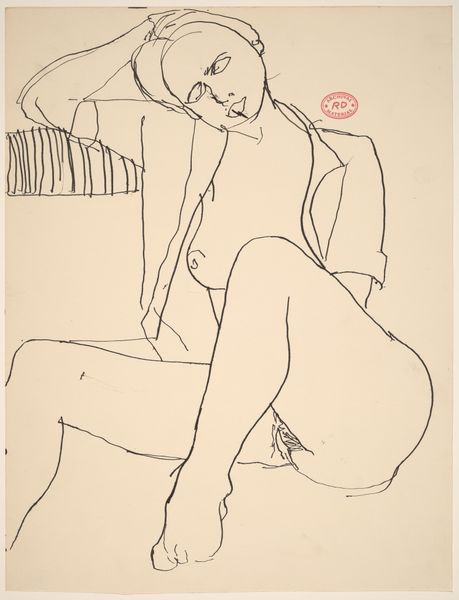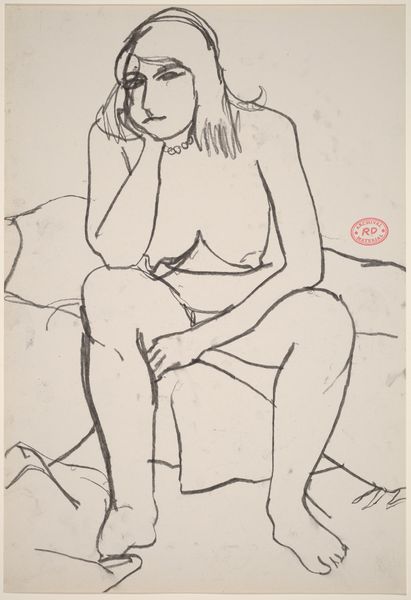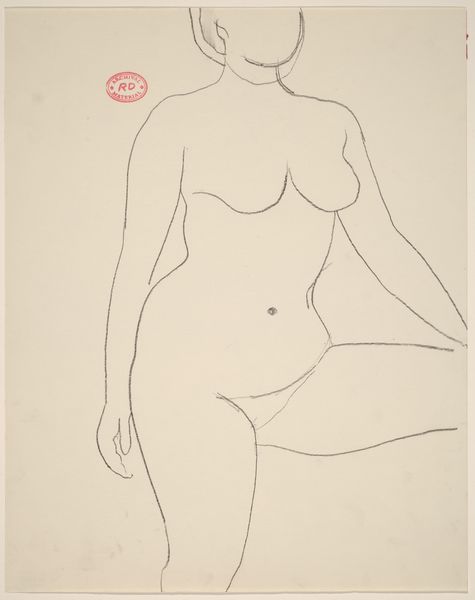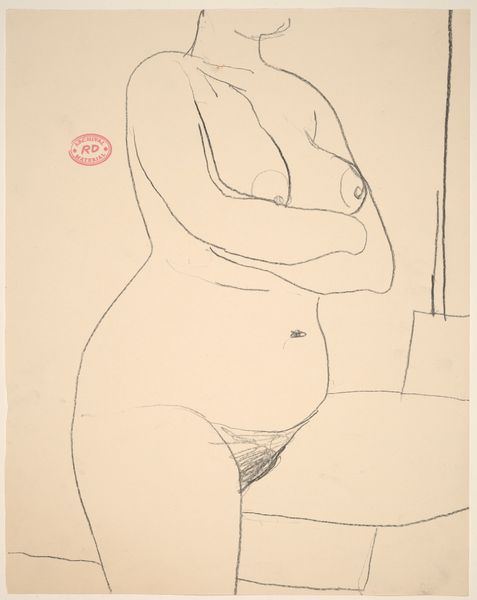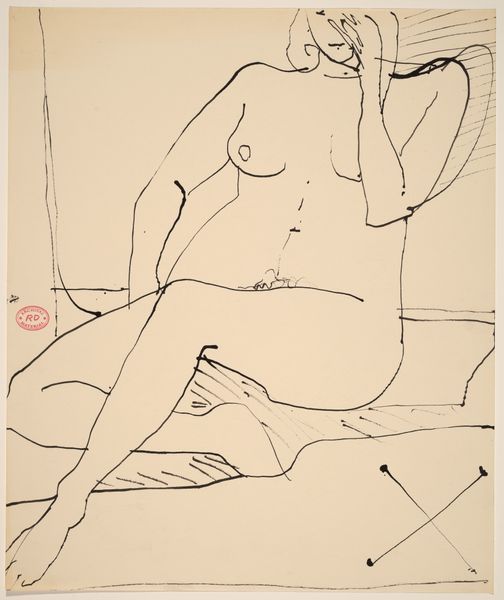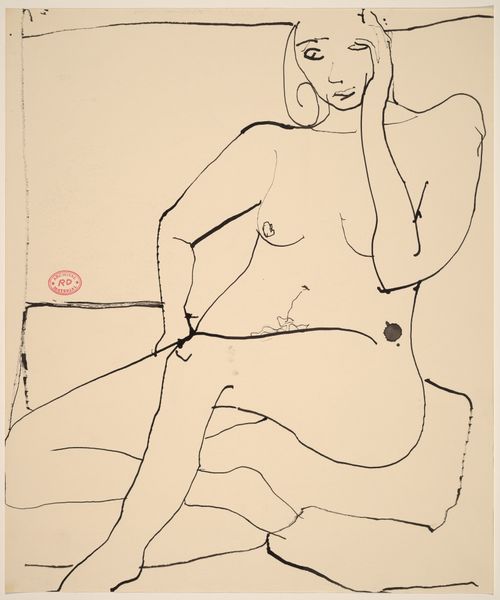
Dimensions: image: 63.5 x 61.1 cm (25 x 24 1/16 in.)
Copyright: National Gallery of Art: CC0 1.0
Curator: Looking at this striking print titled "Claire Nude" by Tom Wesselmann, created in 1980, I'm immediately struck by how cold it feels despite the supposed intimacy of the subject. Editor: I agree; there's a deliberate flattening of form. I think it’s less about representing a specific person and more about a depersonalized, idealized woman, which Wesselmann often explored. How do you see its social commentary fitting into that time? Curator: Wesselmann's use of simplified, almost geometric shapes really draws my eye to the print-making process itself. He flattens out the figure so the viewer understands that this is paint on paper. I find this so different from paintings of nudes by artists like Titian. Editor: Right. I think we can read that in context. Wesselmann worked during a fascinating time of the growing commodity fetish, and it shows how the female body becomes another object in the domestic landscape to be consumed, stripped bare, devoid of identity—highlighted, even, by the facelessness. Curator: The flatness makes me think about the commercialization of art itself. Wesselmann blurs boundaries: he brings together the so-called high art of nude figure painting and a medium easily made and disseminated like print. What does that tension highlight for you? Editor: I would say this allows the viewer to acknowledge this is not some venerated odalisque in a royal collection. We are invited to challenge our gaze. Who are we looking at, and what's our relationship to her, as passive observers or critical participants in how the female body is perceived? I also wonder: in this geometric, flat, highly saturated style of his pop-art era, does the “perfection” undermine or embolden the historical patriarchy in artistic spaces? Curator: I like that tension and I do not know that it ever completely resolves, which for me keeps bringing me back to think about this artwork in terms of the choices of the medium and what Wesselman's hands did in this making. It makes me consider the context of pop art, challenging elitism in the art world by embracing industrial methods of making art, of producing work for the people. Editor: For me, I still can't escape feeling unnerved and intrigued by the woman, Claire, rendered as both intimate and infinitely distant in Wesselmann’s vision of modern womanhood.
Comments
No comments
Be the first to comment and join the conversation on the ultimate creative platform.
